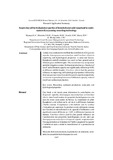| dc.contributor.author | Nyariki, Dickson M. | |
| dc.contributor.author | Mganga, K. Z. | |
| dc.contributor.author | Musimba, N. K. R. | |
| dc.contributor.author | Nyangito, M. M. | |
| dc.contributor.author | Ekaya, W. N. | |
| dc.contributor.author | Mwang’ombe, A. W. | |
| dc.date.accessioned | 2017-02-25T07:42:59Z | |
| dc.date.available | 2017-02-25T07:42:59Z | |
| dc.date.issued | 2010 | |
| dc.identifier.uri | http://hdl.handle.net/123456789/215 | |
| dc.identifier.uri | https://repository.ruforum.org/documents/improving-soil-hydrological-properties-denuded-semi-arid-rangeland-southeastern-kenya | |
| dc.identifier.uri | https://www.researchgate.net/publication/327437689_Improving_soil_hydrological_properties_of_denuded_semi-arid_rangeland_in_south-eastern_Kenya_using_reseeding_technology | |
| dc.identifier.uri | http://repository.seku.ac.ke/handle/123456789/912 | |
| dc.description.abstract | A study was conducted to establish the contribution of Eragrostis superba, Enteropogon macrostachyus and Cenchrus ciliaris in improving soil hydrological properties in semi-arid Kenya. Kamphorst rainfall simulator was used on bare ground and at different grass stubble heights. The experiment was set up under sprinkler irrigation system. Sediment production as a function of runoff and infiltration capacity was significantly different (p<0.05) at different stubble heights. Cenchrus ciliaris had the greatest influence on improving soil hydrological properties followed by Enteropogon macrostachyus and Eragrostis superba respectively. An increase in grass height increased infiltration capacity, reduced runoff and sediment production. | en_US |
| dc.language.iso | en | en_US |
| dc.subject | semi-arid | en_US |
| dc.title | Improving soil hydrological properties of denuded semi-arid rangeland in southeastern Kenya using reseeding technology | en_US |
| dc.type | Article | en_US |

